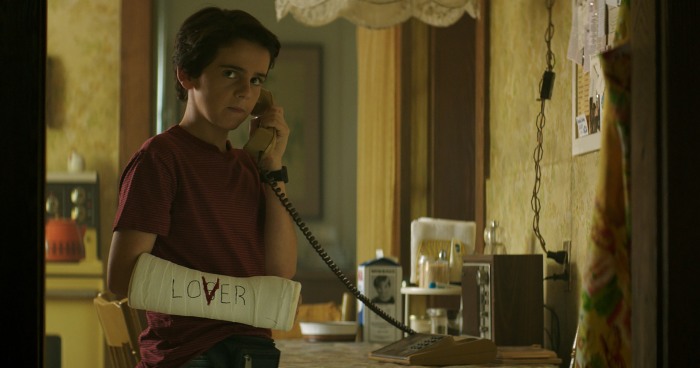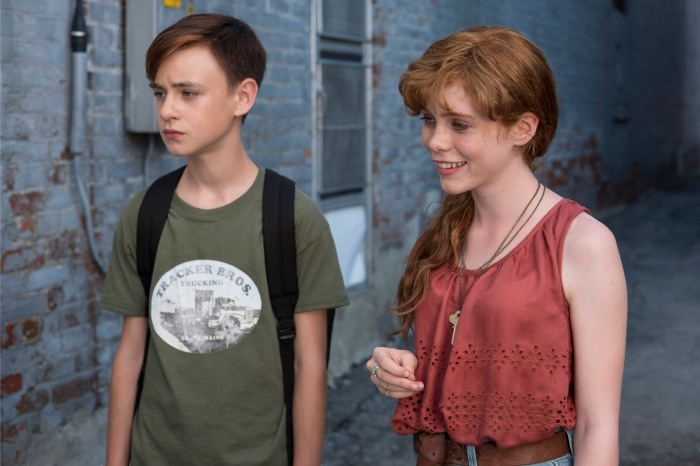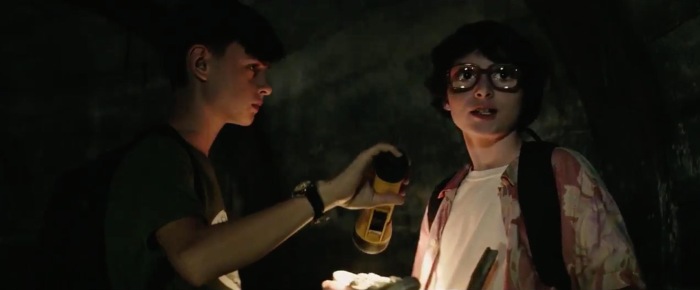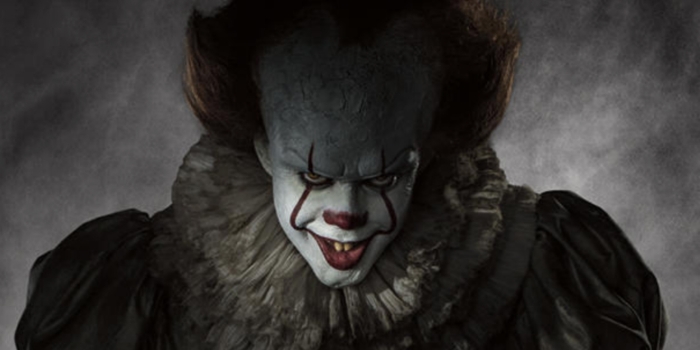I’m sorry to report that once again I haven’t been able to get to a theater to see the many movies on my time-sensitive backlog this week – Crawl, Midsommar, Yesterday, The Art of Self-Defense, and of course Spider-Man: Far From Home among them – but what I can talk to my beloved readers about today is the third season of Netflix’s instant 1980s sensation Stranger Things, which dropped on the Fourth of July, and which I’ve recently completed. Some of my more dedicated and maybe creepily invested fans will recall that I reviewed Season 2 of the very same show on this very site way back in 2017 when it first dropped (read that here), so this post will probably read pretty similarly to that one, but before I dive in, I have to of course give an obligatory SPOILER warning, although I don’t plan on going into depth on critical plot details if I can help it.

When the squad parties too hard and you have to go to the ER.
For the most part, Stranger Things Season 3 is really great, and it hits on a lot of the elements that made the show the success that it became in the first place. The Starcourt Mall, an overwhelmingly 1980s set that happens to be hiding a dark secret far beneath its foundations, is the perfect venue for stimulation of the audience’s nostalgia pressure points, showcasing the kooky fashion trends of the day in its many boutique stores and playing such memorable hits as Day of the Dead and Back to the Future in its cinema. With the colorful backdrop in place, and an Independence Day milieu that heightens the summer viewing vibe, the show is able to squeeze yet another paranormal series of events from the Hawkins area, engaging a sizable slew of protagonists against vividly terrifying inner and outer demons alike, and it’s all of course tracked by a soundtrack featuring either synth-heavy ominous scoring or classic rock A-sides. As I wrote in my previous review of Season 2, one of the things that the writers of Stranger Things continue to do so well is pair its vibrant cast of characters in the right way – I was overjoyed to see the hero team of Dustin and Steve reunited after a largely successful outing in the previous season (with the addition of newcomer Robin, who’s subjected to a real crash course in the oddities hiding in Hawkins), while the Hopper-Joyce-Murray team is a fairly natural banter factory. Splitting the crew up at the season’s beginning also organically builds hype in a very effective way for the eventual reunion, which in this case (like in Season 2) happens in the phenomenal final episode – an episode that manages to provide both heart-pounding action and quiet introspection within its hour-twenty runtime (not to mention that spellbinding duet that people are talking about).

Anyone else spend the entire season terrified that they were going to kill Steve?
Among the cast, the standout who deserves the most attention is probably Dacre Montgomery returning as Billy Hargrove – the human villain introduced in Season 2, and purportedly everything the show’s writers wanted Steve Harrington to be before casting the ultra-charming Joe Keery. With the possible exception of Millie Bobby Brown (Eleven), who also turns in a stellar performance once again, Montgomery probably has the hardest acting job within the events of the third season, playing a role that demands convincing internal conflict essentially throughout. David Harbour – I’m going to try not to get emotional as I write this – is also excellent once again, though his role really attains no further depth here, and the aforementioned Keery is also solidly likable for a third straight season. As for the younger members of the cast, there are certainly some shaky moments, especially from Noah Schnapp and (surprisingly) Finn Wolfhard, and the inevitability of puberty removes some of the charm that makes Stranger Things so special from their characters, but they nonetheless continue to make an effective ensemble that’s due at least one more return to Hawkins. I was also thrilled to see more of Brett Gelman after his brief appearance as certified wacko Murray “Bald Eagle” Bauman in Season 2, and am looking forward to him potentially carrying on as a recurring character.

Imagine if Steve was a creepy muscly lifeguard who predatorily seduces housewives at the local pool and then unrelatedly becomes the co-pilot of a monstrous being set on killing Eleven and essentially destroying Hawkins/Earth. Glad the Duffer Brothers went a different way on this one.
My real sole issue with Season 3 amounts to a problem with the romantic subplots weaving in and out of what we really show up to see: monsters, spooky setpieces, and Hopper punching people. I’m all for at least one will-they won’t-they instance (I’d say the Hopper-Joyce flirtation is the most compelling), but it seemed like essentially every character was enduring some kind of romantic tension at some point, and it was simply a bit too much, and not at all what I think of the show as being about. My frustration with this was (perhaps intentionally) personified by Noah Schnapp’s Will, who takes overly dramatic issue with the gang’s testosterone-driven obsession with the gentler sex and apparently in doing so births a fan theory that he is in actuality gay. Perhaps all of the hormonal hubbub is simply a product of – and a reminder that – the gang has hit puberty, where subplots like that tend to take hold. After all, we saw essentially the same thing happen in the weirdly quirky but also dark rom-com that was Harry Potter and the Half-Blood Prince, certainly a far cry from the more innocently inclined Sorceror’s Stone. Either way, while Hopper’s “keep the door open three inches” rule laid the foundation well for his profoundly emotional posthumous heart-to-heart monologue, I’d much prefer a “keep the door closed and locked” approach when it comes to watching teenagers awkwardly make out if I were him.

I mean, talk about shirt goals. This style absolutely needs to be brought back, and this is Exhibit A.
Stranger Things’ third season definitely trumps the highs of the second season, and also contains fewer lows – and no, I’m not just talking about that bizarre and widely panned episode from the second season where Eleven goes punk – and while the show’s attempt to be more John Hughes-y is more than a bit unwelcome on my part, this penchant for sappy teenage romance is balanced by a stronger dose of spookiness than the sophomore outing boasted. Given that the Duffer brothers have reportedly aspired to end the show’s run after four or five seasons (not much of a neverending story after all, Dustin), I’m beyond curious to see where things go in what could be the cultural phenomenon’s swan song, and how they plan on bringing a number of characters who have seemingly been removed from play by the events of this season’s finale back into the fold. For now, it’s unclear how long we’ll have to wait to find out whether Eleven will get her powers back, and also what the hell happened to our beloved Hopper, but until that time comes I have no doubt that the internet will be teeming with speculation.

RIP Alexei – gone but not forgotten.
Have you watched Stranger Things Season 3 yet (hopefully you have, otherwise you’ve been spoiled by reading this far)? What’d you think? Drop me a comment!











